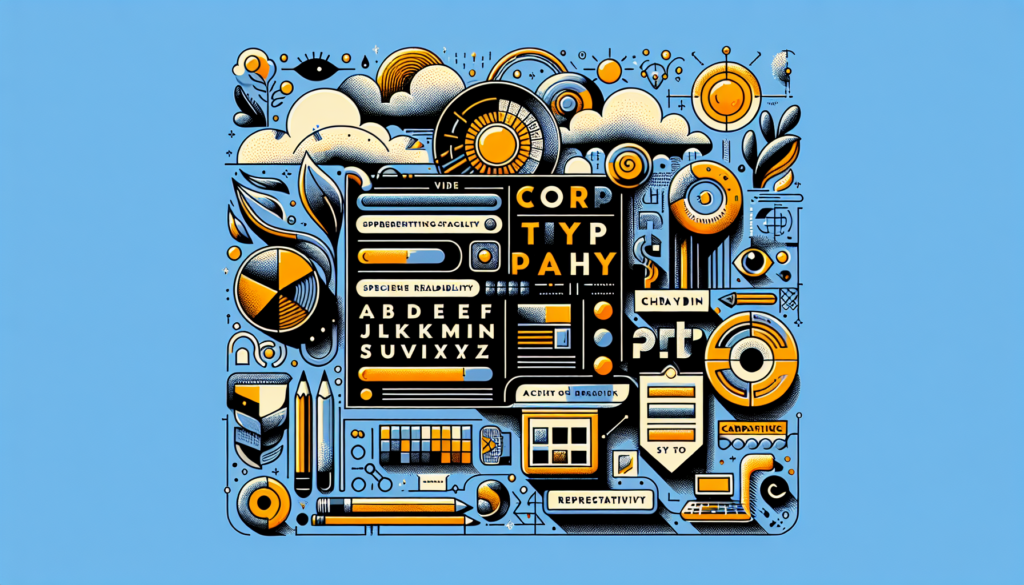Typography is a crucial component in web design, acting as a bridge between the visual presentation of a page and the communication of its content. Its importance is not limited to aesthetics; it is essential for functionality, accessibility, and readability. This article provides a detailed analysis of how the choice of typography can significantly influence the perception and effectiveness of a corporate website, delving into the technological innovations in the field of digital typefaces and their integration into modern web design.
Conceptual Framework: Fundamental Theories of Typography in Web Design
Readability and Functionality: Typography must be readable and functional across different devices and screen sizes. Fonts should be chosen and set up in such a way that they facilitate quick reading and understanding of the content, rather than acting as a barrier.
Typography Psychology: The psychology of typeface shape also plays an important role. Studies indicate that the style of a font can influence how the message is received, potentially conveying formality, innovation, or friendliness, depending on its characteristics.
Accessibility: Including accessibility in typographic design ensures that information can be consumed by the broadest possible audience, including people with visual or cognitive disabilities.
Brand Identity: The selected typography should resonate with the company’s identity and reinforce the brand through visual and emotional consistency.
Web Performance: Optimizing fonts to improve load speeds and page efficiency is a technical consideration that directly affects user experience and SEO.
Trends and Typographical Technologies in Modern Web Design
With the evolution of web technology, typographic innovations emerge such as:
- Variable Fonts: Variable fonts allow the adjustment of weight, width, and other properties of a font in a single scalable file, leading to better performance and customization.
- Color Fonts: Incorporating colors and gradients directly into fonts opens new possibilities for creative expression without sacrificing accessibility.
- Font Loading Strategies: Strategies like FOUT (Flash of Unstyled Text) and FOIT (Flash of Invisible Text) help control how fonts are loaded and displayed on the page to improve performance and user experience.
Practical Applications and Comparison with Previous Works
The adoption of advanced typographic practices should be contrasted with traditional approaches:
- From Web-Safe Fonts to Custom Web Fonts: While previously reliant on a limited set of web-safe fonts, today it is possible to use custom fonts that better reflect a brand’s identity and enhance the user experience.
- Responsive Typography: Responsive typographic design adapts typography to different devices and contexts, an evolution from traditional fixed design.
- Readability vs. Visibility: Improved screen resolutions allow smaller font sizes without sacrificing readability.
Case Studies and Real-World Situations
Google Fonts Analytics: Google Fonts offers analytics that demonstrate how the choice of fonts can affect the performance of a website. Companies like Airbnb and Medium have improved their usage metrics and visits by optimizing their typography.
A/B Testing Experiments in Typography: Performing A/B tests with different typographic sets can provide data on the influence of typography on user conversion and engagement.
Implementations of Variable Fonts: Organizations like Adobe have shown how to implement variable fonts for more versatile design and optimized performance.
Future Innovations and Directions
Looking towards the future:
- Development of AI tools for personalized typographic design.
- Advancements in typography for Augmented and Virtual Reality, adapting fonts to new interaction mediums.
- Increased use of ethical typographic licenses and open-source fonts.
Typography is a cornerstone of web design that merges aesthetics, psychology, and technology. Informed typographical decisions are imperative for creating effective and expressive corporate websites that perform well in today’s competitive digital ecosystem. Staying abreast of technical innovations and using them to improve user experience ensures that a brand can communicate its message clearly and efficiently, while establishing its identity in the vast world of the internet.

